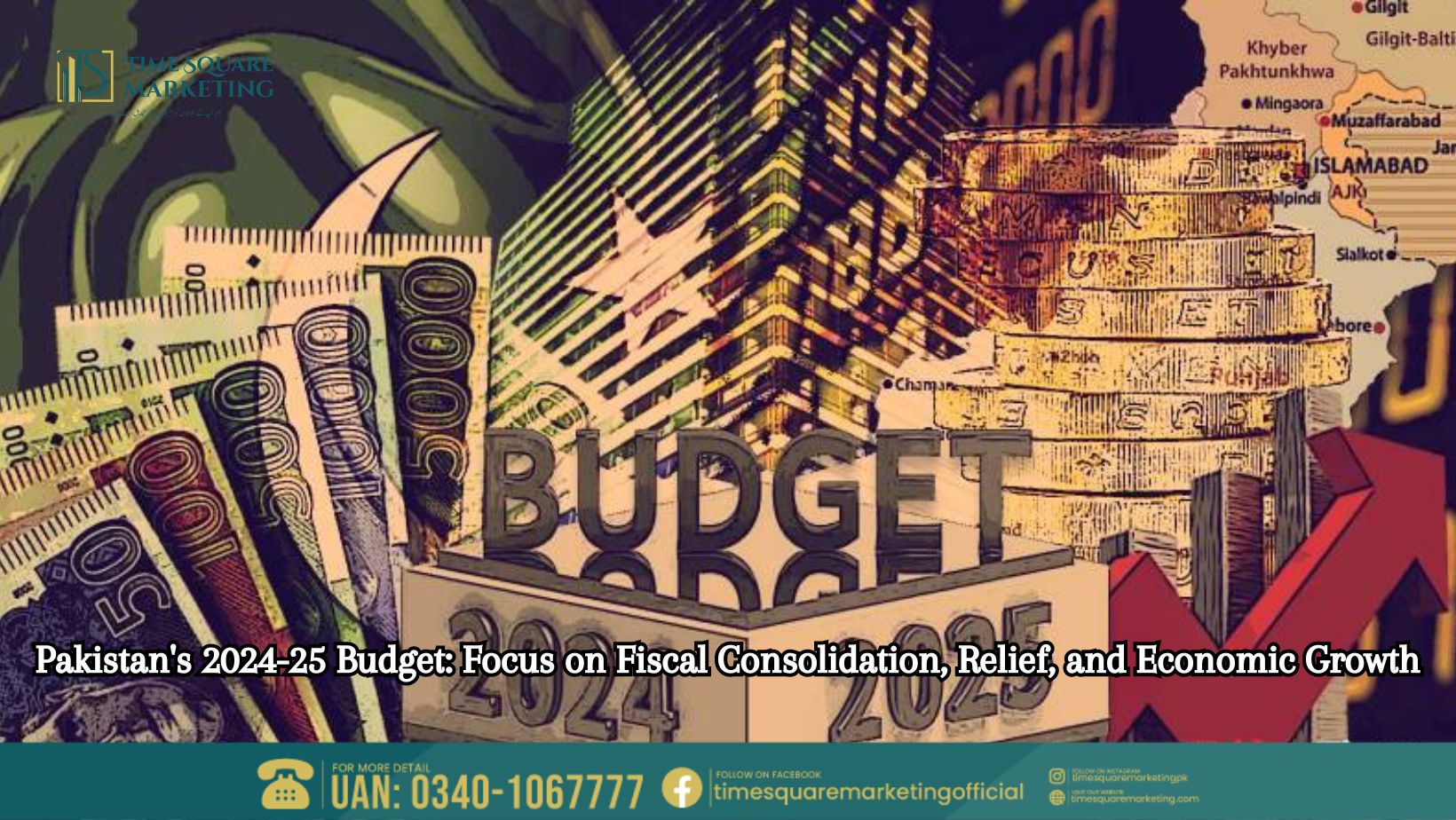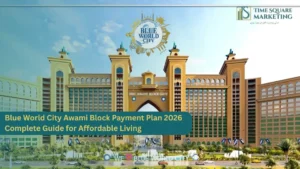The Pakistan government has unveiled its federal budget for the fiscal year 2024-25 with a total outlay of 18,877 billion rupees. The budget aims to balance fiscal consolidation with support for productive sectors and relief measures for the common man. This comprehensive financial plan outlines the government’s strategy to promote economic growth, manage inflation, and provide social support to vulnerable populations.
Revenue and Expenditure
The Finance Minister, Muhammad Aurangzeb, presented the budgetary proposals, estimating gross revenue receipts at 17,815 billion rupees. This includes the Federal Board of Revenue’s (FBR) collection of 12,970 billion rupees and non-tax revenue of 4,845 billion rupees. The provinces’ share in federal receipts is projected at 7,438 billion rupees.
The budget deficit is expected to be 5.9% of GDP, with a primary surplus of 1% of GDP. The government plans to pay 9,775 billion rupees for interest payments. The projected growth rate for the next fiscal year is 3.6%, with an anticipated inflation rate of 12%.
Relief Measures and Social Support
In a significant move to provide relief to government employees, the Finance Minister announced a 25% salary increase for Grades 1-16 and a 20% raise for Grades 17-22. Retired government employees will see a 15% increase in pensions, and the minimum wage will rise from 32,000 to 37,000 rupees.
The government remains committed to supporting vulnerable segments of society through the Benazir Income Support Programme (BISP). The BISP budget will increase by 27% to 593 billion rupees. The Kafalat program will expand its recipients from 9.3 million to 10 million, with enhanced cash transfers to mitigate the impact of price hikes. Additionally, one million more children will join the education stipend program, bringing the total to 10.4 million scholarships.
A poverty graduation and skills development program will be launched under the BISP to promote economic inclusion. A hybrid social protection program will also be introduced to ensure financial independence for beneficiaries.
You may also explore: Richest Cities in Pakistan
Boosting Exports and SME Support
To bolster exports, the government proposes increasing the export refinance scheme from 3.8 billion rupees to 13.8 billion rupees. An export credit facility of 539 billion rupees will be provided through the State Bank of Pakistan, with at least 40% of this facility directed towards the SME sector. The credit for small and medium enterprises will be enhanced from 540 billion rupees to 1,100 billion rupees, with an additional 100 billion rupees allocated for the next fiscal year.
Agriculture and Infrastructure Development
For the agriculture sector, 5 billion rupees have been earmarked for the Markup and Risk Sharing Scheme for Farm Mechanization under the Kissan Package. This scheme will provide financing for planters, tractors, thrashers, harvesters, and mobile grain dryers.
The budget allocates 206 billion rupees for water resources, including 45 billion rupees for Mohmand Dam, 40 billion for Diamer Bhasha Dam, 18 billion rupees for Chashma Right Bank Canal, and 10 billion rupees for Pat Feeder Canal.
In the energy sector, 253 billion rupees have been set aside. For the IT sector, 79 billion rupees have been allocated, with significant investments in digitalization and reforms in the FBR, and the establishment of IT parks in Karachi and Islamabad.
Support for Overseas Pakistanis
Recognizing the importance of remittances from overseas Pakistanis, the budget proposes 86.9 billion rupees to facilitate the diaspora. This amount will cover the reimbursement of TT charges, and digitization of the immigration landscape will simplify procedures for overseas Pakistanis. The government will introduce the Mohsin-e-Pakistan award to honor the extraordinary services of overseas Pakistanis.
Education and Human Development
The budget proposes substantial investments in improving infrastructure and educational facilities in 167 government schools in the federal capital. A school meal program will be introduced in 200 primary schools in Islamabad to provide balanced and nutritious food for students. Pink buses will transport female students from rural to urban areas, and Danish schools will be expanded to Islamabad, Balochistan, Azad Kashmir, and Gilgit-Baltistan.
Climate Change and Environmental Initiatives
The government is committed to climate mitigation efforts. The Pakistan Climate Change Authority will be made functional, and a national Climate Finance strategy will be prepared by October. The budget includes 4 billion rupees for E-bikes and 2 billion rupees for energy-efficient fans. Gender and climate budget tagging has been integrated into government budgeting and accounting.
Privatization and Economic Reforms
The government will accelerate the privatization of PIA, Roosevelt Hotel, House Building Finance Corporation, and First Women Bank. A concrete plan is being developed to offer other state-owned enterprises for private sector investment. Islamabad International Airport will be the first to be outsourced, followed by Lahore and Karachi airports.
Development Budget and Regional Focus
The budget allocates 1,400 billion rupees for the Public Sector Development Programme (PSDP), with an additional 100 billion rupees through public-private partnerships. A significant portion of the development budget, 81%, is allocated for ongoing projects, while 19% is for new projects. The development budget focuses on infrastructure, transportation, energy, IT, and water resource management.
Tax Reforms and Austerity Measures
The government is implementing tax reforms to enhance revenue collection and ensure equality and justice in tax laws. Exemptions and concessions in sales tax are being reviewed, and certain goods will be taxed at reduced or standard rates. The budget proposes increasing GST on Tier-1 retailers of textile and leather products from 15% to 18% and imposing an 18% tax on mobile phones.
Austerity measures include reducing government expenditures and considering the abolition of vacant positions to save 45 billion rupees. Reforms will be introduced in the existing pension scheme to decrease pension liability over the next three decades. A contributory pension scheme has been introduced for new employees, supported by monthly government contributions.
Conclusion
The 2024-25 federal budget reflects the Pakistan government’s commitment to fiscal consolidation, economic growth, and social support. By balancing development initiatives with austerity measures and tax reforms, the government aims to promote sustainable growth and improve the well-being of its citizens. The budget outlines a clear path towards addressing economic challenges, enhancing infrastructure, and ensuring social protection for vulnerable populations.








